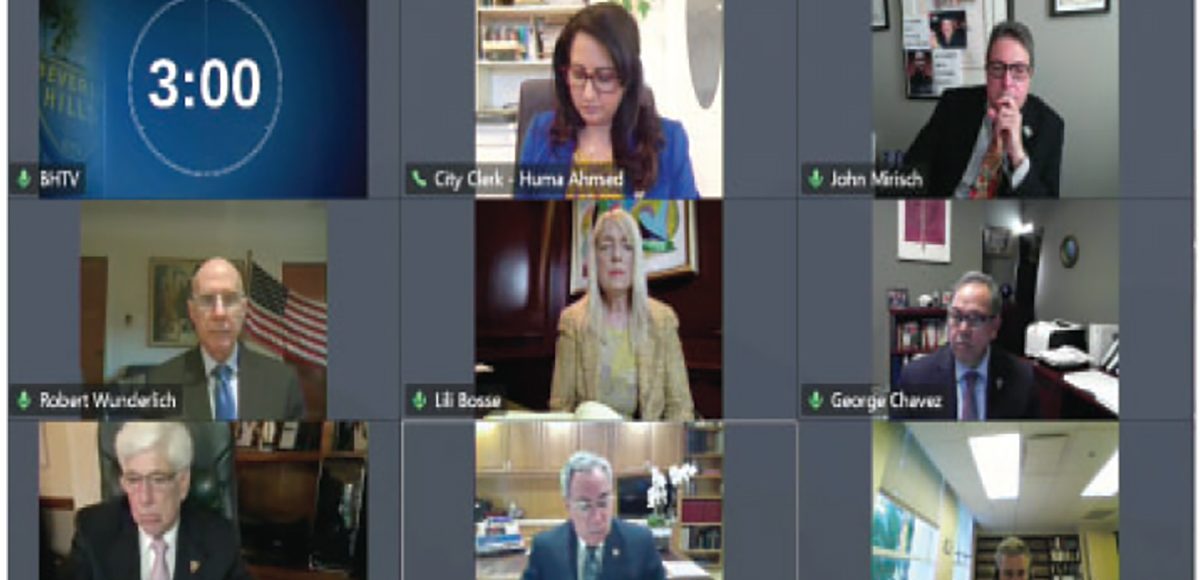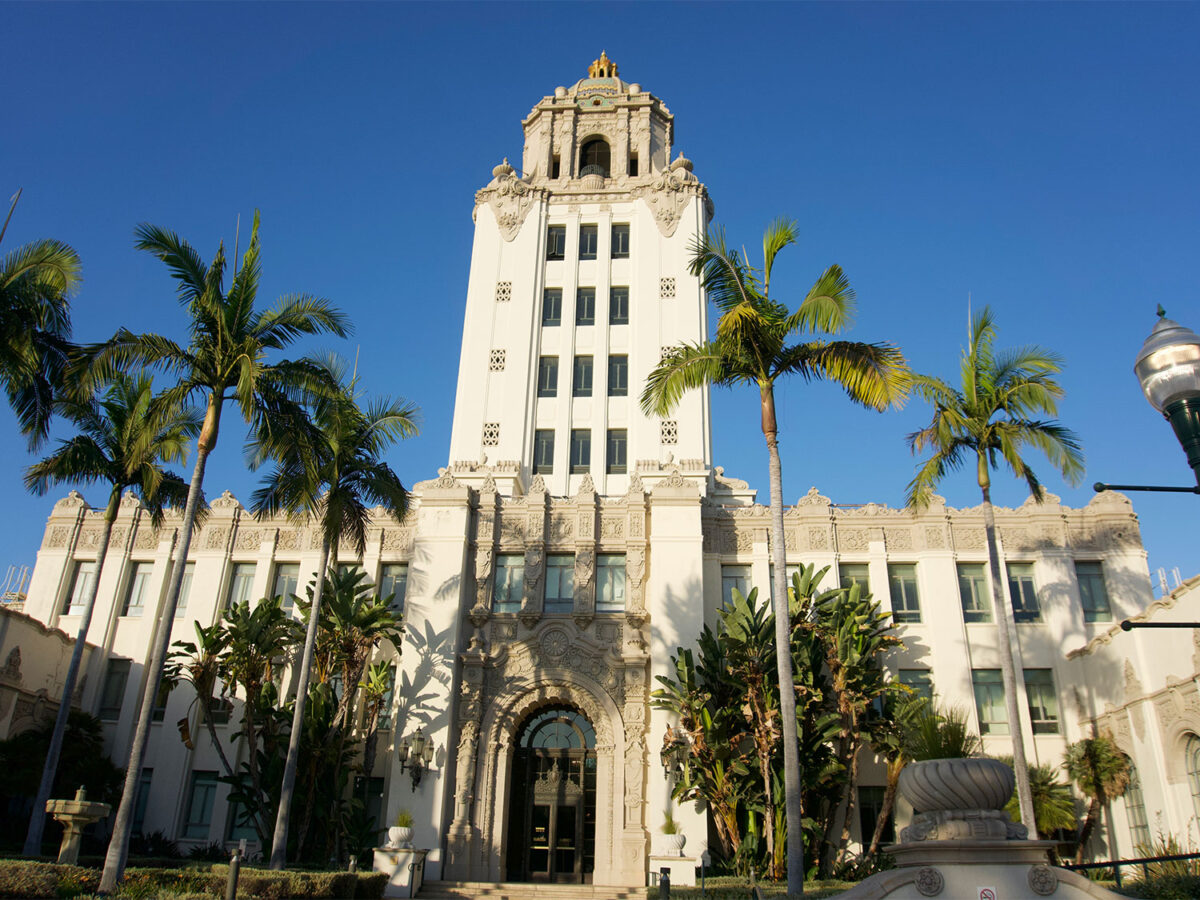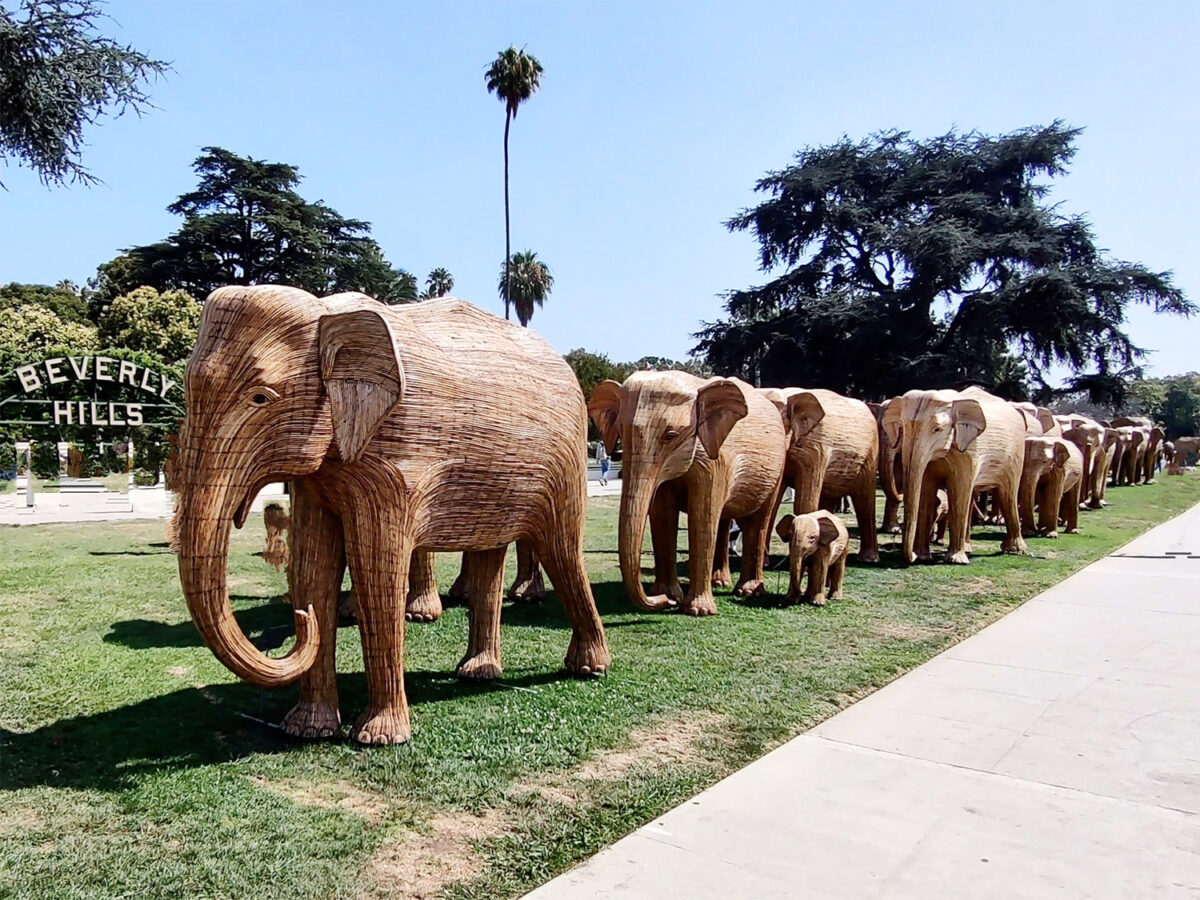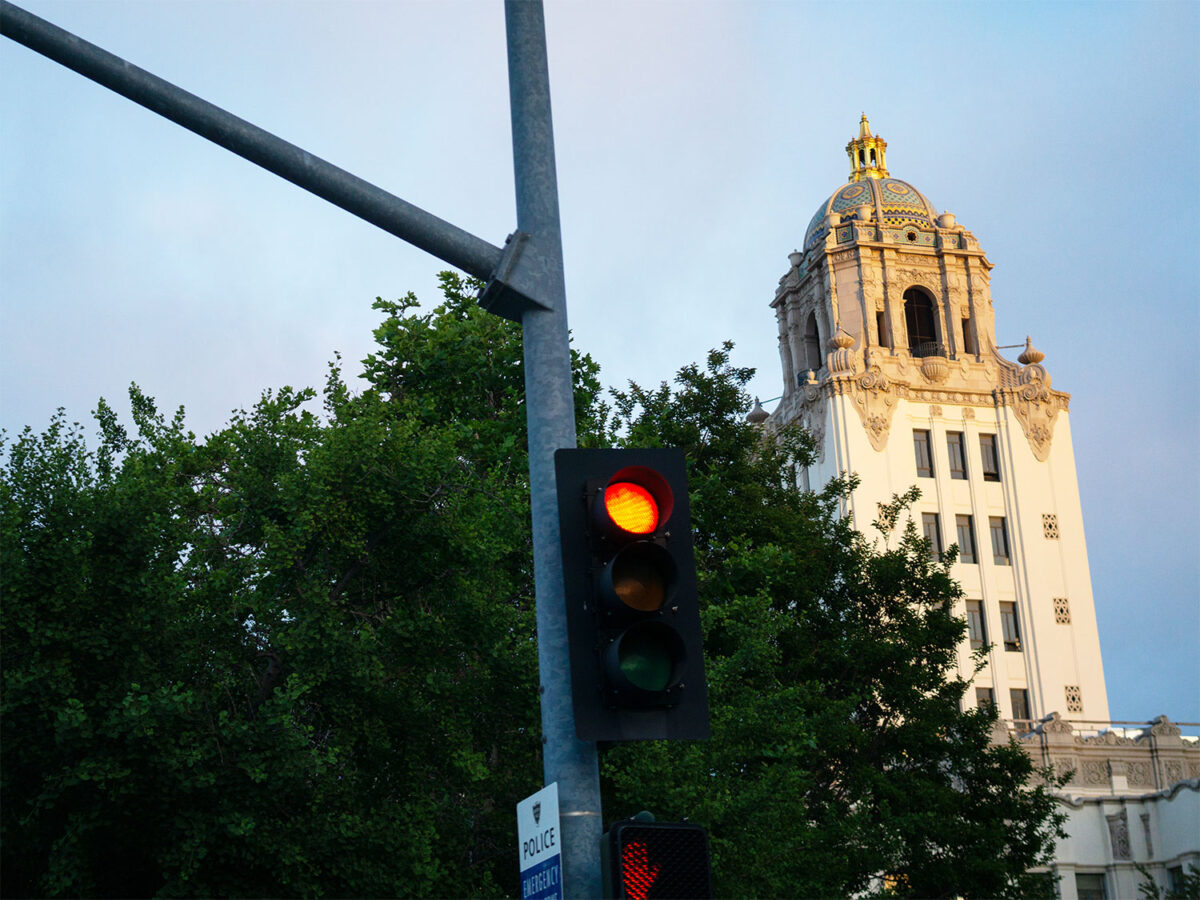Despite concern that an emergency ordinance might encroach on First Amendment rights, the Beverly Hills City Council voted 4-1 on June 16 to prohibit nighttime assemblies of 10 or more people in residential areas.
City Councilman John Mirisch, the lone “no” vote in ratifying Civil Emergency Order No. 6, which went into effect at 9:55 p.m. on June 13 as an emergency order, advocated that the Council adopt a sunset provision to reduce the exposure of the City to First Amendment challenges. The order is currently set to expire when the Council terminates the emergency declaration of May 30 related to the protests sparked by the death of George Floyd.
“Under the conditions of the disaster, it is deemed necessary in the interest of public peace, health, and safety to restrict the use of residential areas of the City during nighttime hours in order to enable residents to sleep,” states the newly passed ordinance. “There is a continuing threat that other protests will take place in the late night or early morning hours when many people would be ordinarily sleeping.”
The emergency order was passed as a specific response to the group Occupy, that sought to loudly protest in residential areas during the previous two Friday nights. The ordinance specifically prohibits more than 10 people from gathering in a public right of way in a residential area between 9 p.m. to 8 a.m. for a common purpose or goal, excepting assemblies of silence and gatherings on private property.
Mayor Lester Friedman characterized the ordinance as preventative, particularly given that the Occupy group specifically sought to cause a confrontation with Beverly Hills police.
“They were wearing hard hats, they had helmets on, they had body vests, they had backpacks, and they had other types of protective clothing which was very unusual from the demonstrators we had peacefully brought in and out of town the last week or so. It was apparent from their rhetoric on the bull horns and the amplified sound devices that they were using that they intended to be confrontational and not peacefully march,” described Assistant Chief of Police Marc Coopwood of the June 12 interaction with approximately 100 people who identified themselves as members of Occupy.
Eventually, the group began throwing objects at the police and pointing lasers in their faces and eyes, a crime in California. In response, after three times asking the group to disperse, Beverly Hills Police directed sponge projectiles towards protestors and ultimately deployed tear gas, precipitating the crowd to disperse.
In anticipation of the Council’s vote on June 16, two people called in during public comment to voice concern about passing an ordinance which bans protests.
“I understand that those protests were met with police brutality, including tear gas and sponge-tipped grenades. Frankly I’m horrified to know that there are police in our neighborhoods deploying these weapons. Nothing makes me feel more unsafe than a militarized police force so close to home,” said one resident who identified herself as Kayla.
The second caller, Ron Richards, questioned the ability of the Council to even pass the ordinance and advocated that the Council include a sunset date. “Typically, a residential neighborhood is designated as a First Amendment zone and you really can’t have a blanket ban on protests in a First Amendment area,” he said.
City Attorney Larry Weiner, who crafted the order, said that he thought if challenged, case law would uphold the ordinance.
UCLA First Amendment Law Professor Eugene Volokh, who attended Beverly Hills High School in the 1970s, likewise told the Courier that it did not appear as though the City’s ordinance violated the First Amendment.
“I think the interests in protecting residential privacy and quiet are sufficient to justify this kind of restriction,” he said, noting that the City’s order still allows people to demonstrate, it just essentially regulates the manner of speech and the time of the gatherings. “It is a restriction on speech, but it is a content neutral one.”
Volokh cited U.S. Supreme Court case Frisby v. Schultz (1988), which determined that it was acceptable to impose mild content restrictions on speech. “It’s not okay to just totally ban it,” he said.
Following passage of the emergency order last Saturday, people took to social media to voice both their support and disdain for the ordinance. “Is this legal?” asked one person. “The City of Beverly Hills clearly does not support justice protestors,” stated one person on Instagram. “It’s not a peaceable protest if they are using a bullhorn in a residential area at midnight,” responded another. “Thank you,” commented many others.







